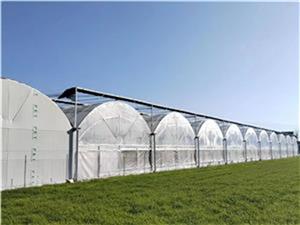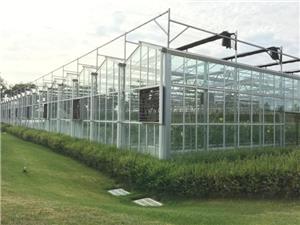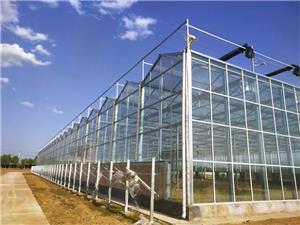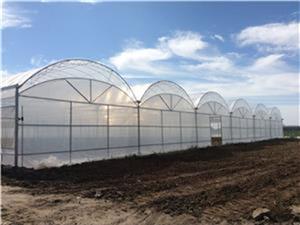The impact of carbon dioxide on the greenhouse effect
It is well known that the basic elements for the growth of green plants are carbon dioxide and water. Under light conditions, plants carry out photosynthesis through chloroplasts, synthesizing carbohydrates and releasing oxygen. According to relevant measurements, for every gram of organic matter synthesized by plants, 1.6 grams of carbon dioxide must be absorbed, which is 40 times that of other substances. 90% of the dry matter accumulated by plants comes from photosynthetic products. The amount of carbon dioxide used by one acre of crops is equivalent to 80,000 to 120,000 cubic meters of carbon dioxide in the air. Thus, it can be seen that carbon dioxide is of great importance to plants.
Since carbon dioxide is a colorless and odorless gas, when it is invisible or imperceptible in the air, it is often overlooked, especially for crops grown in greenhouses. For crops grown in greenhouses, if it is winter, to keep warm, the doors and windows need to be tightly closed to make the greenhouse sealed. After the sun comes out, due to the enhanced photosynthesis of the crops, the concentration of carbon dioxide in the greenhouse drops rapidly, and fresh air cannot enter the outside. When the concentration of carbon dioxide in the greenhouse drops to around 100PPm, although there is plenty of sunlight, the plant roots do not absorb enough water, but there is insufficient carbon dioxide, and the plants cannot carry out photosynthesis, resulting in "carbon dioxide hunger", which affects normal growth, yield and quality.
When the carbon dioxide content is insufficient, plants will be in a "starvation" state, which will have a significant impact on the growth and development of crops. The leaf color tends to be dull, and the plants grow poorly. Flowers and fruits are prone to falling off. There are many abnormal fruits, and the quality is reduced. Negative effects occur, such as a decrease in yield. Excessive carbon dioxide concentration can cause leaf curling, affecting the normal operation of photosynthesis, affecting the absorption of oxygen by the crops, and hindering normal respiration and metabolism.
Therefore, the addition of carbon dioxide in greenhouse cultivation also plays a significant role in modern intelligent greenhouses. It can help growers achieve better crop performance, more dry matter synthesis, longer shelf life, and better fruit flavor, etc. The results are extremely effective.
It is well known that the basic elements for the growth of green plants are carbon dioxide and water. Under light conditions, plants carry out photosynthesis through chloroplasts, synthesizing carbohydrates and releasing oxygen. According to relevant measurements, for every gram of organic matter synthesized by plants, 1.6 grams of carbon dioxide must be absorbed, which is 40 times that of other substances. 90% of the dry matter accumulated by plants comes from photosynthetic products. The amount of carbon dioxide used by one acre of crops is equivalent to 80,000 to 120,000 cubic meters of carbon dioxide in the air. Thus, it can be seen that carbon dioxide is of great importance to plants.
Since carbon dioxide is a colorless and odorless gas, when it is invisible or imperceptible in the air, it is often overlooked, especially for crops grown in greenhouses. For crops grown in greenhouses, if it is winter, to keep warm, the doors and windows need to be tightly closed to make the greenhouse sealed. After the sun comes out, due to the enhanced photosynthesis of the crops, the concentration of carbon dioxide in the greenhouse drops rapidly, and fresh air cannot enter the outside. When the concentration of carbon dioxide in the greenhouse drops to around 100PPm, although there is plenty of sunlight, the plant roots do not absorb enough water, but there is insufficient carbon dioxide, and the plants cannot carry out photosynthesis, resulting in "carbon dioxide hunger", which affects normal growth, yield and quality.
When the carbon dioxide content is insufficient, plants will be in a "starvation" state, which will have a significant impact on the growth and development of crops. The leaf color tends to be dull, and the plants grow poorly. Flowers and fruits are prone to falling off. There are many abnormal fruits, and the quality is reduced. Negative effects occur, such as a decrease in yield. Excessive carbon dioxide concentration can cause leaf curling, affecting the normal operation of photosynthesis, affecting the absorption of oxygen by the crops, and hindering normal respiration and metabolism.
Therefore, the addition of carbon dioxide in greenhouse cultivation also plays a significant role in modern intelligent greenhouses. It can help growers achieve better crop performance, more dry matter synthesis, longer shelf life, and better fruit flavor, etc. The results are extremely effective.




